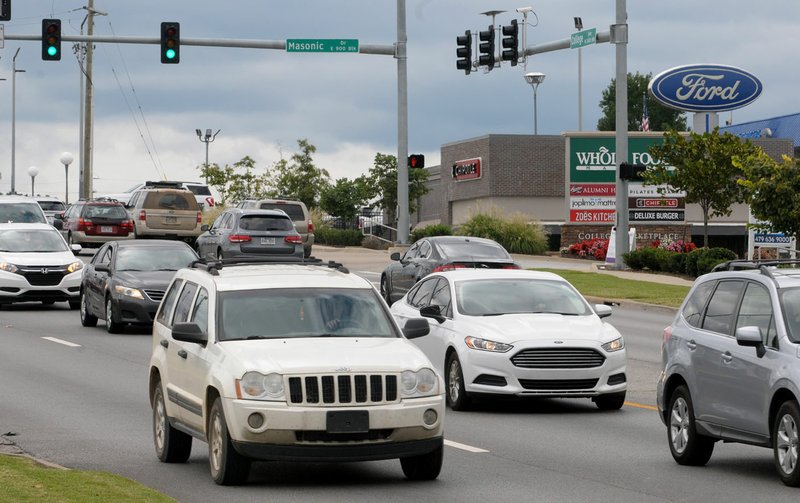FAYETTEVILLE -- The signs designating North College Avenue as U.S. 71B should be gone by the end of the year.
That's because the city has an agreement in place with the Arkansas Department of Transportation to take ownership of the state-run highway. The city's Transportation Committee, consisting of half the City Council, on Tuesday forwarded the agreement to the full council to consider Sept. 17.
Read the plan
For more information on the city’s U.S. 71B Corridor Plan, go to:
Under the agreement, the city would take over U.S. 71B from the North Fulbright Expressway to the South Fulbright Expressway. The highway doubles as North College Avenue down to Rock Street, then becomes Archibald Yell Boulevard for a brief stretch south of downtown, then becomes South School Avenue.
City officials want to take over the stretch so they can do what they want with it without getting Department of Transportation approval first. Right now, any time the city wants to put in a crosswalk or a median or traffic signal, it has to get a permit from the state.
The permits take up staff time for the department and slow the city's plans, so neither entity benefits, said Danny Straessle, spokesman for the transportation department.
"It functions as a city street more than a state highway. That's why it's called the business route," he said. "We have a lot of these all over the state we would just love to unload from the system."
The Transportation Department will spend about $12 million as part of the agreement. It will widen Arkansas 112 and make improvements such as adding bicycle and pedestrian lanes from Truckers Drive, near Sam's Club, north to the city limits. The estimated cost of that project is more than $10 million. The city already received a $350,000 grant to put toward 112, and will, according to the agreement. That grant comprises $280,000 in federal money and $70,000 from the city.
Part of Arkansas 112 runs north-south as Garland Avenue. It runs east-west at Van Asche Drive. The city also asked for improvements to Howard Nickell Road, which has an odd intersection with Arkansas 112. That intersection could turn into a roundabout.
Ownership of that portion of Arkansas 112 would remain with the department, City Engineer Chris Brown said. The 112 improvements were on the department's radar, with a program and budget already in place, he said.
"It's a priority for them anyway," Brown said. "The net effect is it probably gets this project done two to five years quicker."
The department also will give the city $1.5 million to make any improvements it wants anywhere along its stretch of 71B, as long as the project meets federal criteria. The department originally had the money dedicated to pavement and bridge preservation along the roadway.
In exchange, the city will agree to maintain its portion of the highway. Estimated cost to put new asphalt along the 6.5-mile stretch is $2.5 million. The city expects to put down new asphalt every 15 to 20 years. It already is responsible for maintenance of traffic signals, sidewalks and trees.
The city has been working with a consultant on a redevelopment plan for 71B for more than a year. The plan calls for a number of features that would be difficult or impossible to do with the state continuing its ownership, said Garner Stoll, development services director for the city.
For instance, if buildings along South School Avenue were redeveloped closer to the street, the city might want to reduce the number of lanes to three, lower the speed limit and put in parallel parking, street lights and sidewalks. None of that would be possible under federal regulations for a highway, Stoll said.
In the immediate future, the city will be able to better accommodate residents' needs along the corridor, Stoll said.
"We have a broader community development vision, and the plan is trying to move toward making it a livable community corridor," he said.
NW News on 09/02/2019
